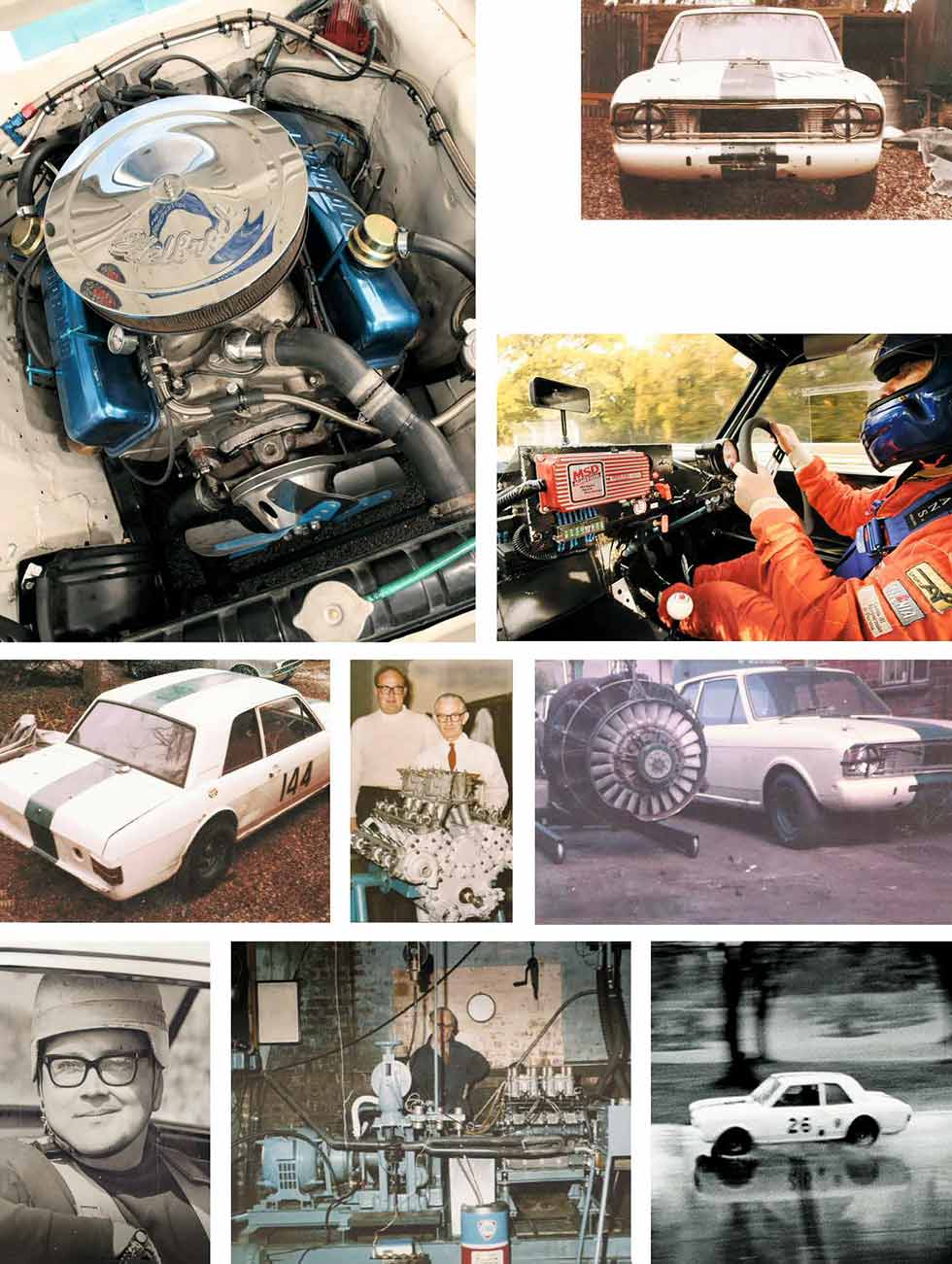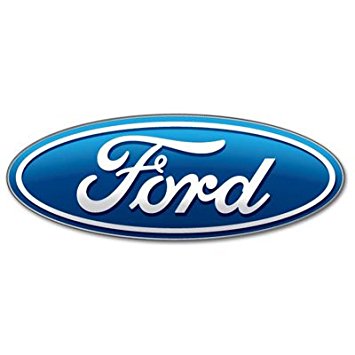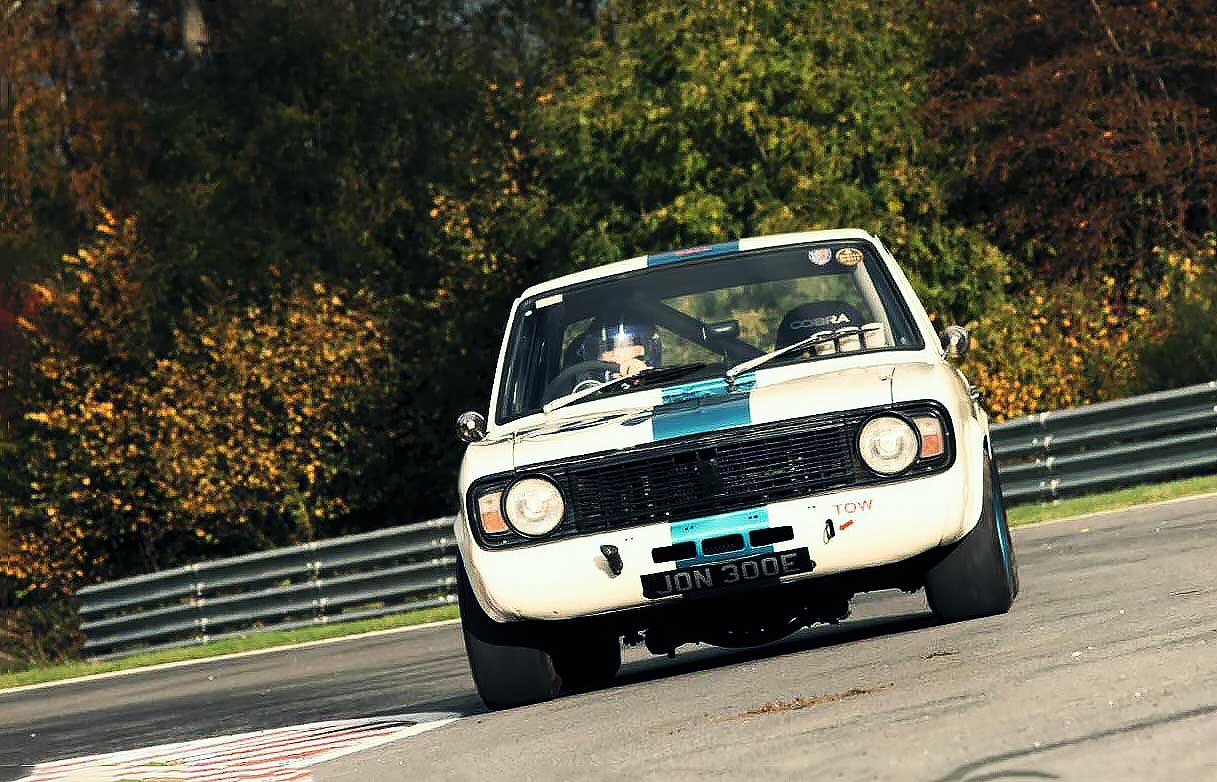
In 1970 a retired Cortina MkII rally car took a trip to the dentist and came away filled with a prototype F1 engine. Today, we drive the MkII Fraud Cortina V8 Words Ivan Ostroff. Photography Lyndon McNeil. Fraud Squat Flat out in the polarising V8-engined Fraud Cortina MkII. Add a Formula One-spec V8 to a family Ford and this happens – perpetuating the Fraud.
The sight of the whopping great ten-inch-wide wheels poking out the rear wheelarches of the wild ‘Fraud’ Cortina MkII make the hairs on the back of my neck stand up. Back when it was being campaigned by its eccentric owner in the early-Seventies I owned a Cortina MkII GT, but the thought of driving this famous beast back then was quite unimaginable. Today that once-impossible dream is about to come true – and on one of the car’s former battlegrounds of Brands Hatch.
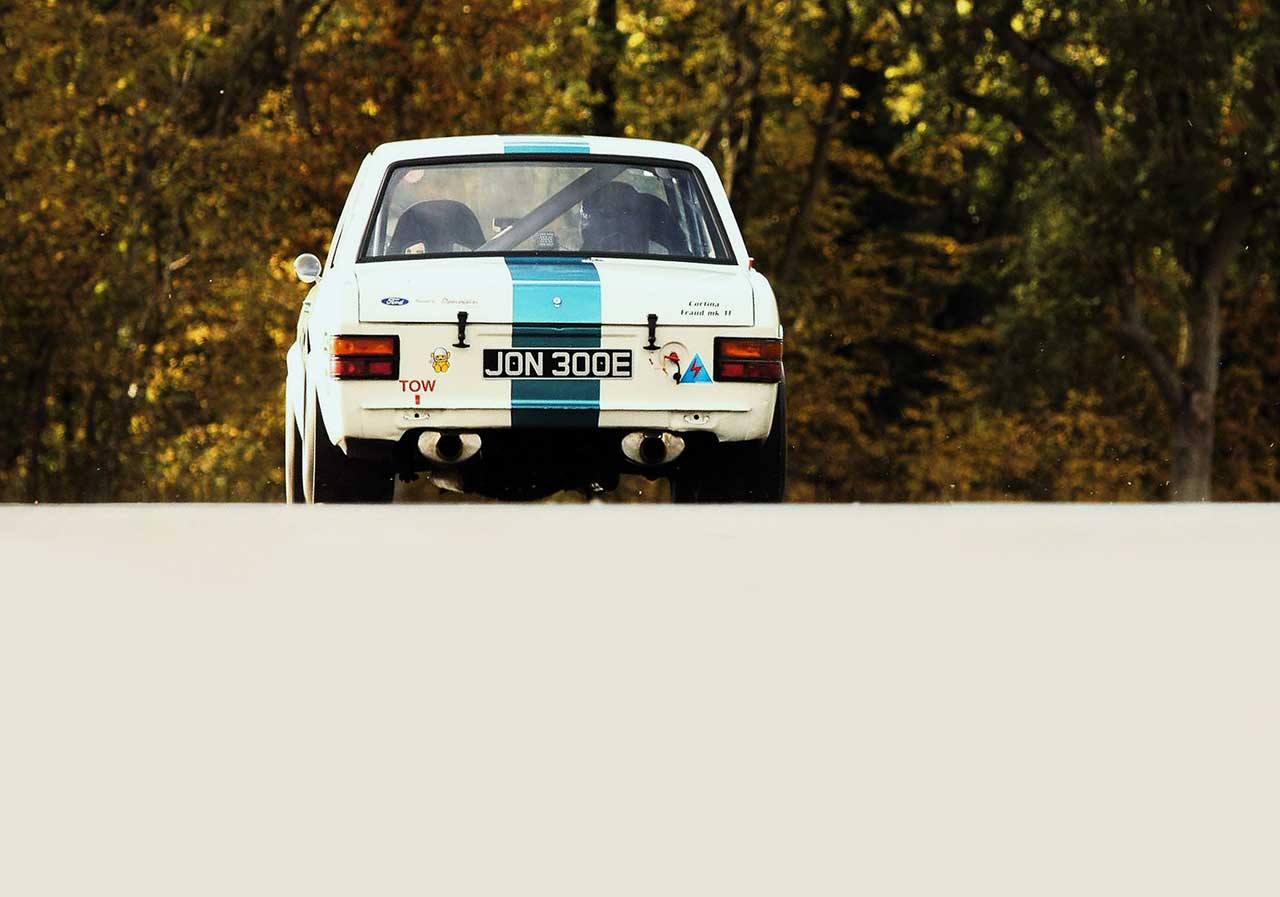
Derek ‘Doc’ Merield was an Australian-born dentist practising in England. As it happens he was also a rather handy weekend wheelman, having won the BARC Cibie Cup for saloon cars in 1961 and ’1962, and later driving his Ford V8-engined Cortina MkI in the Super Saloon races with considerable success. In 1967 Merield sold his MkI on when the Willment racing team offered him the ex-Bengt Soderstrom Cortina MkII rally car as a rolling chassis. Ray Harris – who was rather famous for shoehorning big V8s into small saloons and prepared Merield’s cars for him – later said he ‘cringed at the ex-rally mention because these used to turn up on Monday mornings needing bolt croppers and angle grinders before work could start.’ However, when Merield told Harris that there was a possibility of getting hold of a Coventry Climax FPE Godiva V8 to drop into the MkII shell he decided it sounded too good to pass over. But before that project was finished, Merield managed to obtain another rally-spec MkII bodyshell direct from Ford at Boreham. Painted white with a blue stripe, this one was in a far better condition, so the Willment car was left to gather dust while work proceeded on the Boreham shell. By 1969 it was out on track. Here at Brands the light-alloy Godiva engine is long-gone – thought to now be with the 1955 Formula One Kieft for which it was originally designed – and a 5.7-litre alloy Donovan V8 sits all snug up front. If you didn’t know, you wouldn’t even notice where the bulkhead was cut and shut to free up space. The original Seventies rear half-cage has been replaced by a full Safety Devices device to comply with modern scrutineering, so I climb over the side brace bar and drop down into the dentist’s chair (ok, so that’s new too). Adjust mirrors, lick red master switch, wait for the fuel pump to prime, then press the small black starter button. The American V8 fires and quickly settles into a thunderous idle.
I bring the clutch up carefully, trying to feel where it bites and at the same time gauge its smoothness. The Cortina pulls away easily in first and as I accelerate it snakes just a tad while 472 horses struggle for grip through cold slick rubber. I take second gear almost immediately, then change up into third as I drive slowly through Paddock Hill Bend for the first time. Down the hill on a trailing throttle, the exhaust is popping and banging in disgust.
I register the steering being responsive, accurate, perfectly weighted. First lap complete, I pass the pits in fifth feeling comfortable and gaining confidence. I stay to the left and brake as late as I think sensible in someone else’s unique piece of automotive folklore; the pedals seem to be placed perfectly as I drop down into fourth. As the Cortina sweeps down into Paddock I make ready to receive my stomach coming back up to meet me while feeding in more throttle as the car crosses the apex. There’s no wild tail-wagging, no understeer trying to push me wide; the Cortina is beautifully neutral. I continue to enjoy the car drifting across to the left then accelerate hard up Hailwood Hill with a deep bellowing accompaniment from the two big-bore exhausts. On the approach to Druids I brake hard and heel-toe as I move the lever around the corner from fourth into second. The slicks are well up to temperature now, so a fair amount of aggression is needed to get the rear end to break away on exit. When it does, I gently ease of and balance is restored. Running an uprated but largely true-to-period-spec suspension configuration, this self-confessed hoodwinker is remarkably well-sorted for a homebrewed special.
The handling always was one of the Fraud MkII’s strongest suits; in reality it was the experimental Climax V8’s reliability that held it back. Says current owner Jon Doubleday, ‘Merield had considerable success with his Cortina MkI including several lap records, but this MkII was not developed in the same way. Even after being bored out from 2.5 to 3 litres, it was still only producing 265bhp – half of what its Special Saloon competitors were making.’
Merield perservered despite numerous setbacks and claimed that with revisions, Lacey had run it up to 380bhp before his dyno gave up. But the project ground to a halt in late 1974 – just as the BRSCC’s ‘Superloonies’ series was taking of – when Doc’s racing licences weren’t renewed after he suffered a heart attack, aged 44, linked to a mercury poisoning incident at his dental practice. The Godiva had been designed in 1952 by Walter Hassan and Harry Mundy for the 2.5-litre F1 rules that were to commence in 1954 and continue until 1958. It’s believed that just four of these rather magnificent quad-cam units – originally intended to use fuel injection – were built by Coventry Climax before the project was canned, leaving F1-team suitors like Kieft in the lurch.
In 1979 Jon Doubleday’s father spotted the Fraud MkII for sale in an East London garage. Says Jon, ‘My dad was raving about it and dragged me up there to see it. It didn’t have an engine; it was just a rolling shell and neither of us had a clue what to do with it at the time. But thankfully we bought it anyway.’ Initially, Jon tried to find out if the original engine was still available. Apparently Doc Merield had owned two Godiva units, and the chap who bought the car from Merield did try to buy them, but was outbid for them and a spares cache by the owners of the Kieft F1 car. ‘As a result, the project was unfortunately split and remains so today,’ says Jon.
‘Over the next 30 years the Cortina would surface every now and then with fresh enthusiasm – first we considered fitting a tuned Ford Essex V6 and then a dry-sumped Ford 1300cc four-pot screamer, but other projects always came along and relegated the Cortina to the back of the workshop.’ Then, ten years ago, Jon decided that if he didn’t restore it then, it would just sit there and rot away. By that time he’d noticed that people were showing interest in Special Saloons once again, and realised that running the car with the 1300 would be wrong. ‘There was little chance of finding a Godiva engine so I bought an uprated all-aluminium GM V8-based Donovan powerboat engine that had been running in a Datsun 260 dragster. I felt that if Merield had finally run out of patience with the Godiva, the Donovan was the sort of unit that he would’ve progressed to had it been available at that time.’
Along with the rollcage and seat upgrades, Jon has been forced to make other changes in line with modern safety regulations. He had to it the aluminium door shells with bars, and cover with a round plate the hole Merield made in the passenger door to access the emergency cut of just inside, relocating the cut-of in the process. Similarly, there used to be a hole in the bonnet to clear the row of SU 481DA carburettors mounted on top of the Godiva engine, so Jon has fashioned a metal section and riveted it in place so that the original layout can still be seen. He also replaced the limited-slip differential rear axle that Doc had sourced from a Jaguar for a more robust Hauser item, and uprated the brakes to discs all round. Today, now that they’ve warmed up they feel strong and progressive from any speed.
As I crest Paddock under braking again and clip the blind apex, the front bites beautifully and the back end settles in the most perfect throttle-controlled neutral drift. Cortinas might have the reputation of being rather lively at the rear end, but although there is an awesome amount of power on tap the car is very forgiving despite its enhanced responsiveness. Nowadays Jon uses the car in sprints, hill climbs, speed trials and drag racing events, and tells me that when he took it to the Brighton Speed Trials – as Doc did in period – it ran a 13sec quarter-mile with a terminal velocity of 115mph, despite inclement weather. Today it’s dry and when I try to drag of the line in first gear, the Cortina’s tyres grip resolutely.
Because the car is ‘very non-standard’, as Jon puts it, there are few historic racing categories for which it’s eligible, bar the odd Sports Libre class. ‘I could enter it into the CSCC’s Special saloon race series, but because it still has all its original panels I’d be concerned that they’d get damaged. Also, it’d be one of the oldest original cars and would be up against space-frame cars weighing half as much. Not to mention I’d be up against better drivers! In the Seventies and Eighties I’d try to race something every weekend. Nowadays taking the Cortina out a dozen times a year keeps the car and myself active. It’s great to have complete strangers come over and start talking about it – some can recall Doc Merield’s exploits in it, and others just love it for its looks and the noise it makes. Although it has a big engine – a formula that some said gave Merield an unfair advantage in period – today it’s a 50-year-old car with a driver who’s nearly 60, so nowadays I’m the underdog. And that suits me just fine!’
Tech and photos
TECHNICAL DATA FILE SPECIFICATIONS Fraud Cortina MkII V8 5.4
Engine 350ci (5735cc) Donovan all-aluminium V8 with chainless Edelbrock ACCU cam drive gear, Holley 650 CFM carburettor
Power and torque 472bhp @ 6449rpm; 451lb ft @ 4798rpm / DIN
Transmission Five-speed Tremec TKO500, rear-wheel-drive
Steering Rack and pinion, with Rose joints from steering wheel to rack
Suspension Front: shortened and uprated MacPherson struts by Gaz.
Rear: Hauser live axle with limited-slip differential, coilover dampers, Watt linkage and Panhard rod
Brakes Solid discs with Wilwood calipers all round, six-pot at front and four-pot at rear
Weight 1050kg
Performance 0-100mph: 9sec;
Top Speed: 148mph
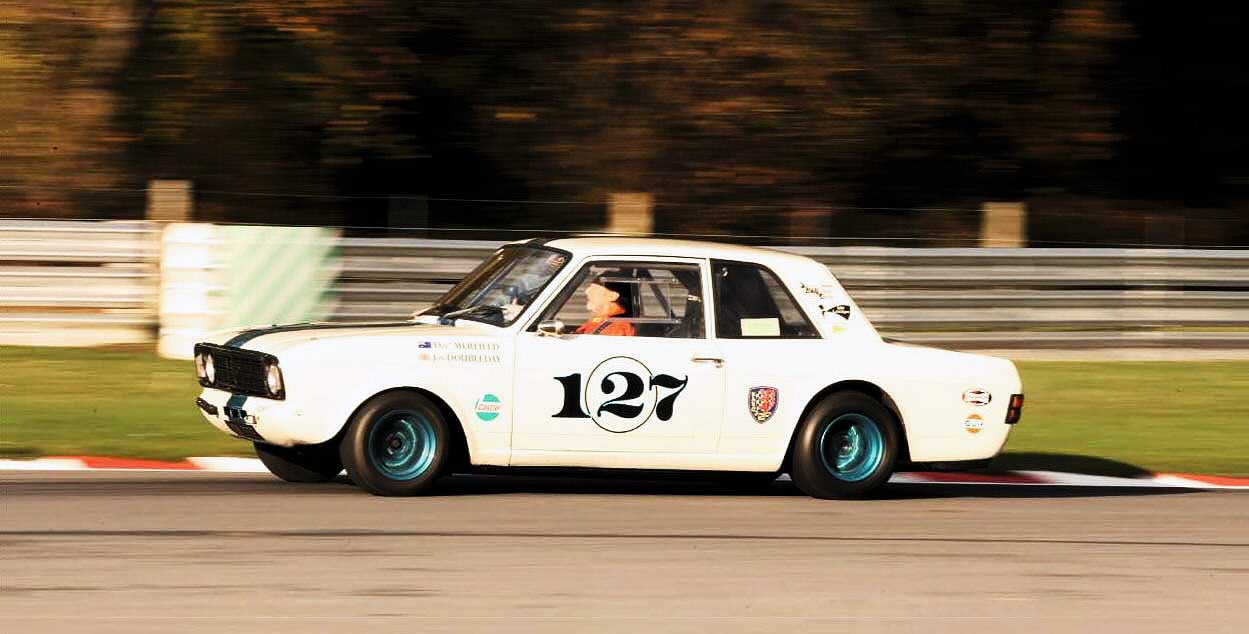

OWNING DOC’S FRAUD MkII
‘When my father bought the MkII in 1979 he gave £400 for it,’ says Jon. ‘More recently I paid £5500 for the Donovan V8 engine. To get the car to where it is now has probably cost a further £35,000.
‘There were many hassles before the car could be considered reliable. The Jaguar axle Merield had fitted couldn’t handle the power that was going through it, nor could the clutch. The brakes also proved inadequate and the suspension too required substantial uprating. We spent three years continually uprating kit until it all worked together. Doc Merield used to have problems with half shafts, but we just tore out differentials. Once we fitted the Hauser axle, that took care of the problem.’
‘There was no interior but the old aluminium seat shell for the driver was still there, bodged with some corduroy. Merield wasn’t a small chap so it was actually quite a size, but we replaced it to satisfy modern regulations.
‘Since completing the car we’ve regularly entered it at the Brighton Speed Trials and the Goodwood Road Racing sprints. Although it looks something of a monster, it’s actually a rather easy car to drive so I’m often able to surprise people.’
